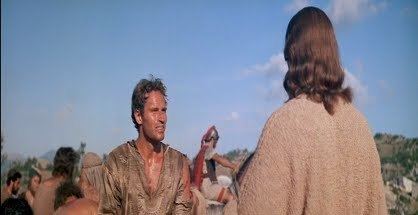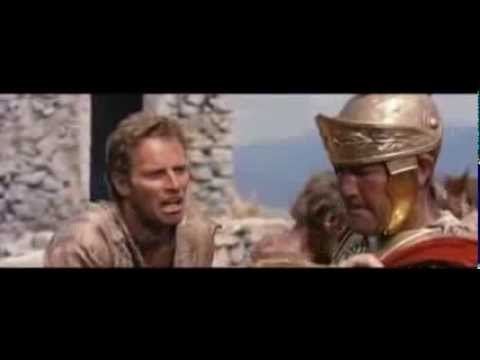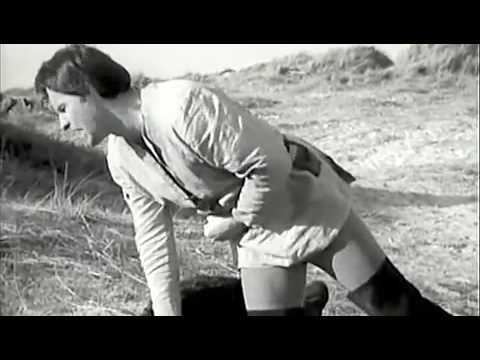Name Claude Heater Role Singer | Ex-spouse Elfriede Biskupek | |
 | ||
Similar People Cathy O'Donnell, Gerd Nienstedt, Eberhard Wachter, Wolfgang Windgassen, Erwin Wohlfahrt | ||
Ben hur 1959 claude heater the man who played jesus christ
Claude Heater (born October 25, 1927) is an American opera singer. He began his career on Broadway as a baritone in New York City in 1950. In 1952 he decided to focus on Opera and left to study as a baritone in Italy. This led to a tour of Spain with an Italian opera company and eventually with opera houses in Europe ending his baritone career after three years at the Vienna State Opera and the San Francisco Opera in California from 1953 to 1961. He retrained his voice as a tenor, and from 1963 had great success in the Dramatic/Wagnerian tenor repertoire at major theatres internationally. After retiring from the stage in the 1970s, he devoted his time to develop dramatic voices. He is also known for portraying the role of Jesus Christ (uncredited in the titles) in the 1959 classic film Ben-Hur.
Contents
- Ben hur 1959 claude heater the man who played jesus christ
- Wagner tristan act 3 d nkt dich das claude heater
- Early life and career as a baritone
- Ben Hur
- Career as a tenor
- Later life
- Filmography
- References

Wagner tristan act 3 d nkt dich das claude heater
Early life and career as a baritone

Born in Oakland, California, Heater grew up in a Mormon family. At the age of seventeen, he joined the United States Marine Corps just before the end of World War II. He then studied voice in Los Angeles, building his voice from scratch. His teacher first refused him saying it was a waste of his time. When Heater was nineteen years old, he served as a missionary of The Church of Jesus Christ of Latter-day Saints (LDS Church) in the Eastern United States of America. After serving as a missionary for two years, he moved to New York City in 1950 to further study singing and acting at the American Theater Wing. In 1950 he made his Broadway debut as a singer and juggler in the original cast of Top Banana with Phil Silvers. In 1952, he was the baritone member of the trio in the world premiere at Brandeis University of Leonard Bernstein's Trouble in Tahiti.

After singing the roles of Germont in La traviata and Valentin in Faust with the Amato Opera in New York City, he moved to Italy in 1952 to continue vocal studies as an opera singer, funded by the G.I. Bill. He finished his study at Scuola Musicale di Milano in Milan, Italy after a year. He debuted as Sharpless in Madama Butterfly at the Piccolo Teatro and sang the role of Count di Luna in Il trovatore in a neighboring city. In 1953 he toured Spain with an Italian company headed by Mario Filippeschi with several baritone roles. He was engaged in Würzburg, Germany in 1954 to open the season as Count di Luna in Il trovatore and Sharpless in Madama Butterfly along with other roles until he returned to Broadway for the musical The Most Happy Fella in 1955. He returned again to Europe in 1956 to sing in Basel, Switzerland with Montserrat Caballé in Tosca, Pagliacci and Tiefland along with Un ballo in maschera, La bohème, and Lohengrin. He went from Basel to Berlin to alternate with Dietrich Fischer-Dieskau in Un ballo in maschera and “Don Carlos” and with Hermann Prey in other roles. His debut was as Escamillo in Carmen. After a successful Germont in La traviata at the Vienna State Opera in 1957, he was engaged there for three years as a baritone under Herbert von Karajan who took him to La Scala to sing in his Tristan und Isolde with Birgit Nilsson. Claude Heater sang again the role with Birgit Nilsson at the Bayreuth Festspielhaus that he sang with her at La Scala and also debuted at the same time in 1966 in Bayreuthin Die Walküre as Siegmund to Gwyneth Jones' Sieglinde. His final performances as a baritone were in 1961 with the San Francisco Opera as Demetrius in Benjamin Britten's A Midsummer Night's Dream, the boyar Schelkalov in Mussorgsky's Boris Godunov, Ping in Puccini's Turandot and Tom Henney in the premiere of Norman Dello Joio's Blood Moon. His last performance of the season was with Dame Joan Sutherland as Henry Ashton in Donizetti's Lucia di Lammermoor.
Ben-Hur

Louella Parsons wrote in 1958 that "The very difficult task of casting the role of Jesus in 'Ben-Hur' has been completed in Rome and came about in a most unusual way. Henry Hennigson, production manager, went to the concert of a young American singer in Rome and heard Claude Heater, whose voice is not only magnificent but he has a beautiful spiritual face. Hennigson told William Wyler and Sam Zimbalist about young Heater and as a result he was tested and given the role. Now here is the strange part: They had to go to Europe to find this boy, who was born in Oakland, California." Because of an English Law that prohibits seeing the face or the voice of someone portraying the part of Christ unless he is the central character, there was some discussion about having two versions, as Wyler was pleased with Heater’s work. Claude Heater's face was shown in a costume test photo only once in the 1993 documentary "Ben-Hur: The Making of An Epic. Charlton Heston spoke highly of his performance in his book The Actors Life. Charlton Heston and Claude appeared together in 2003 at The Academy of Motion Picture Arts and Sciences in Los Angeles at the last showing of Ben Hur as the last two remaining actors from the film.
Career as a tenor

From 1961 to 1964 Heater concentrated on re-training his voice as a tenor, first with Mario Del Monaco in Rome and later with Max Lorenz in Munich and Salzburg. He was scheduled for his debut in Munich as Parsifal at the Prinzeregententheater, an opera house built like the Bayreuth Festspielhaus that was still being renovated. Because of the renovations, his first performance as a tenor was in the title role of Hans Werner Henze's König Hirsch at the Bavarian State Opera in 1964. The performance was a great success and he became the leading dramatic tenor at the opera house from 1964 to 1968; drawing particular acclaim for his portrayal of Wagnerian heroes like Siegmund in Die Walküre, Tristan in Tristan und Isolde, and the title roles in Parsifal, Siegfried, and Tannhäuser. Other important roles in various opera houses were Florestan in Ludwig van Beethoven's Fidelio, the title role in Verdi's Otello along with Canio in Pagliacci and Turiddu in Cavalleria rusticana. Outside of Munich, Heater worked actively as a guest artist at important opera houses during the 1960s and 1970s. His performance credits include appearances at De Nederlandse Opera, the Deutsche Oper Berlin, the Grand Théâtre de Bordeaux, the Grand Théâtre de Genève, the Hamburg State Opera, the Hungarian State Opera House, La Fenice, La Monnaie, La Scala, Gran Teatre del Liceu, the Semperoper, and the Staatsoper Stuttgart among others. He sang the roles of Siegmund and Melot at Bayreuth Festival in 1966, and was to sing Siegfried the following year under Wieland Wagner but due to the untimely death of Wieland, his projects were cancelled.

His first Tristan was in Hannover. He prepared the role in Salzburg and Munich along with Parsifal for his National Theatre Munich debut under the guidance of Max Lorenz who was the favorite Tristan in Europe while Lauritz Melchoir sang it at the Metropolitan Opera. He made his voice change with the help of his neighbor and idol Mario Del Monaco who later bought his white Cadillac from him. Their villas in Rome were attached by a single wall. Mario came to Claude's The Flying Dutchman debut at La Scala and Claude in turn went to Mario's Die Walküre debut in Stuttgart. He became a Mario fan after seeing Mario in Otello and La Wally at La Scala. He also saw Ramón Vinay as the title role in Cyrano de Bergerac at La Scala as well. Claude was a fan of Ramón after seeing him at the Metropolitan Opera as the title role in Otello and he was honored when Ramón Vinay sang the role of Iago in Claude's Boston Opera Otello with Renata Tebaldi in 1968. After his debut as Tristan, Claude sang it in eight different Tristan productions in two years, including at the Festival dei Due Mondi with Gian Carlo Menotti at Spoleto, Italy as well as at the Liceu in Barcelona and the Hamburg State Opera with Birgit Nilsson followed by the Dresden opera with Astrid Varnay. He finished his Boston Otello with Renata Tefand and Ramón Vinay and took a midnight plane to Italy where he had a staged orchestra rehearsal of Tristan und Isolde in Genoa the next day. Both his Bayreuth and La Scala debuts came in 1966 as Siegmund singing with Gwyneth Jones in Die Walküre and Erik in The Flying Dutchman with Leonie Rysanek. He had five seasons at Barcelona's Liceu singing Tristan und Isolde, Tannhäuser, Siegmund, Siegfried that he staged as well. Montserrat Caballé stepped in for an ailing Anja Silja to sing the Elizabeth in Tannhäuser as a favor to Claude who sang with her in her first Tosca, Nedda in Pagliacci, and Marta in Tiefland in Theater Basel, Switzerland. In 1967 Claude made two films of Tristan und Isolde with the Belgium TV, the second film being the full opera with minor cuts. This was the first full-length film Claude had done since the film Ben Hur where he played the role of The Jesus Christ.
Later life
After retiring, Heater resigned his membership in the LDS Church. According to Heater, he left the church after not receiving a spiritual witness that the Book of Mormon after an attempt as missionary and an attempt at the Holy Trinity chapel of St. Catherine Monastery at Mount Sinai, Egypt following his role as Christ in Ben Hur. In 2007, he self-published through Xulon Press a book called Fatal Flaws of the Most Correct Book on Earth.
Claude was the General Director of the Oakland Opera of California during the 1988-1990 seasons where among others, Jerome Hines appeared as Boris Godunov.
He chooses to develop some dramatic voices from scratch in his San Francisco studio for the last 20 years.
